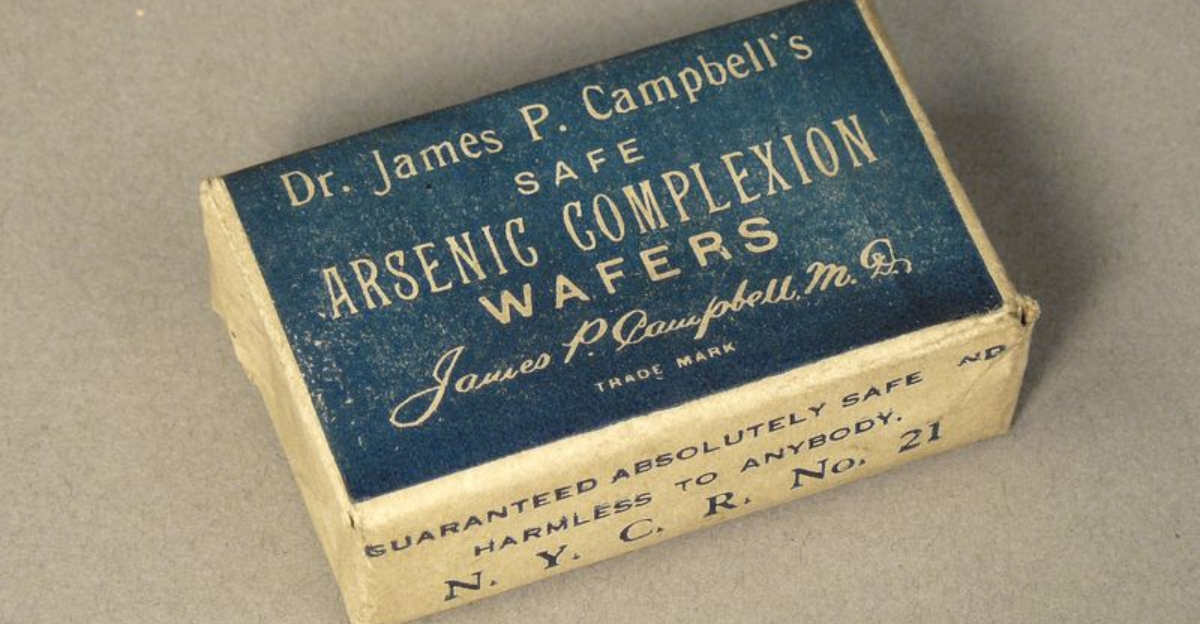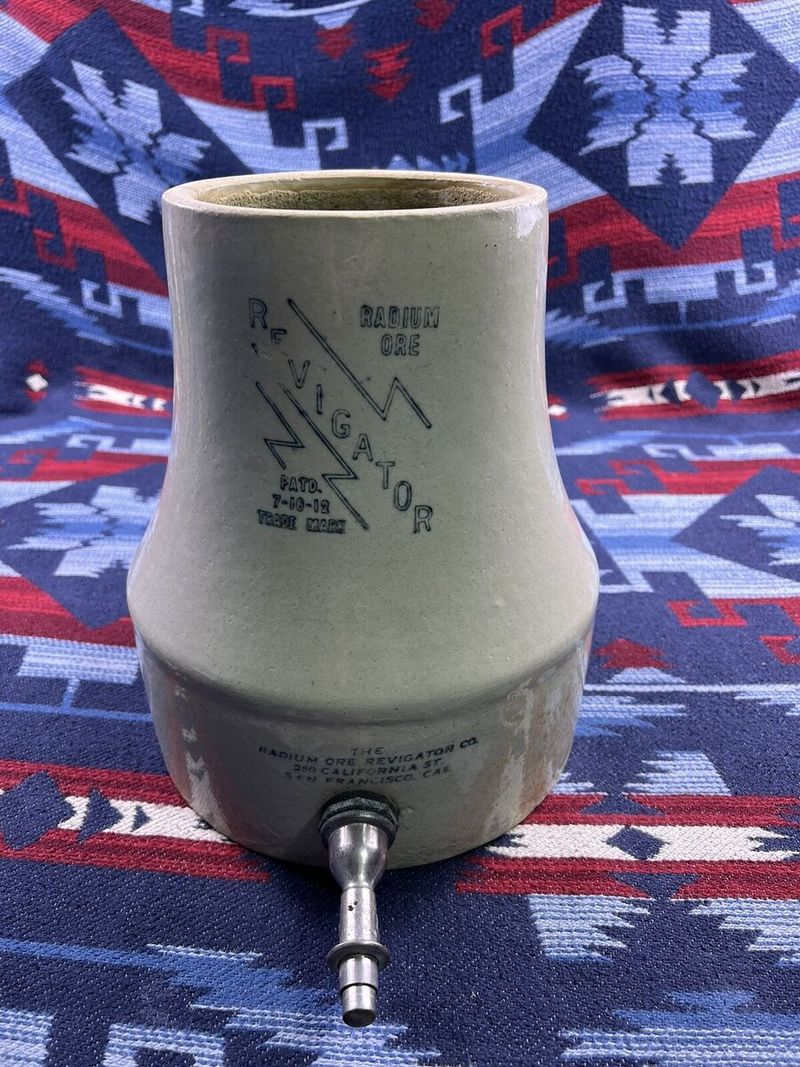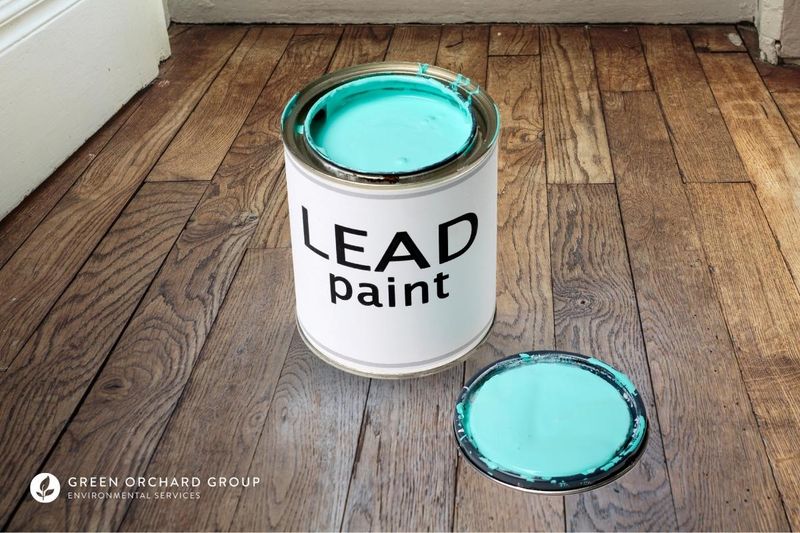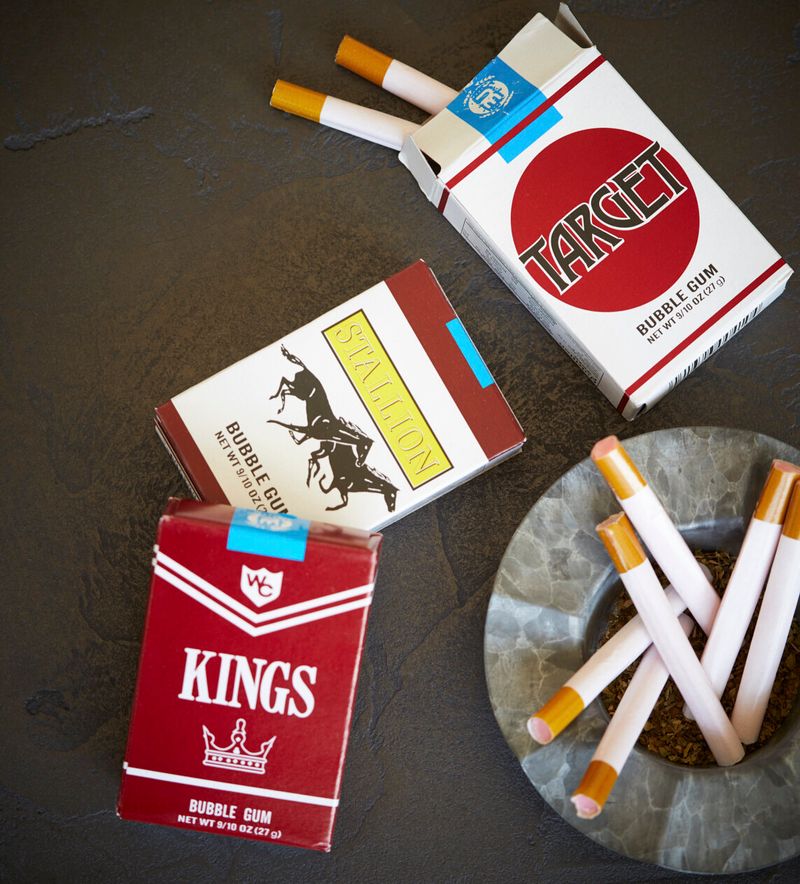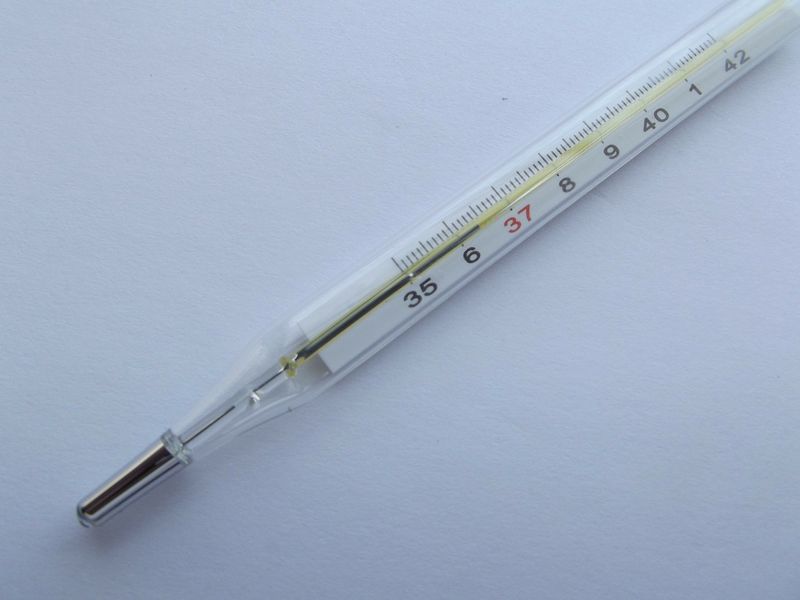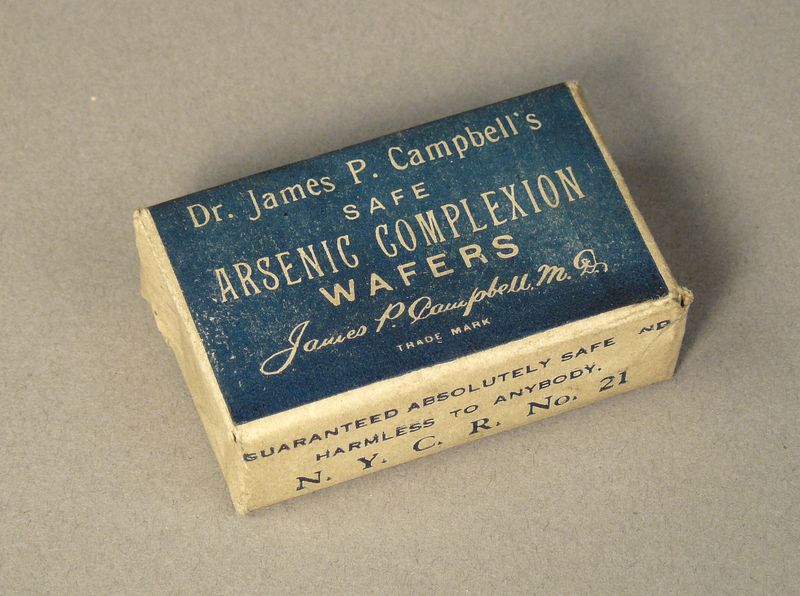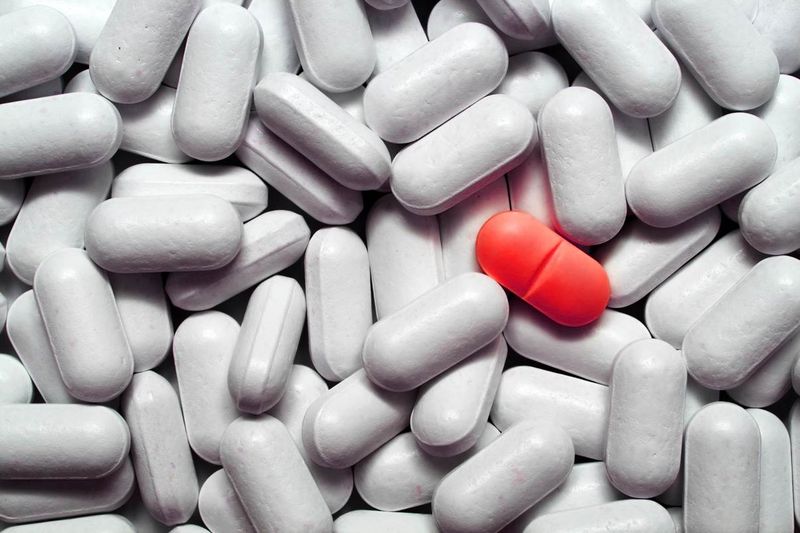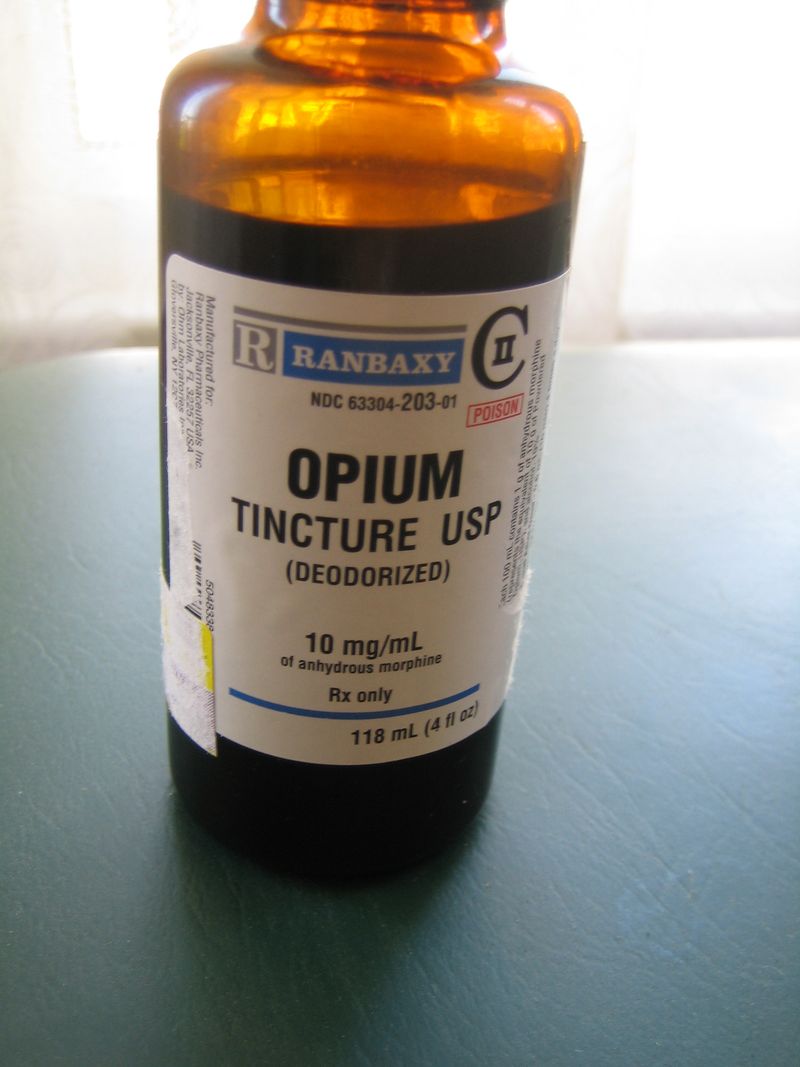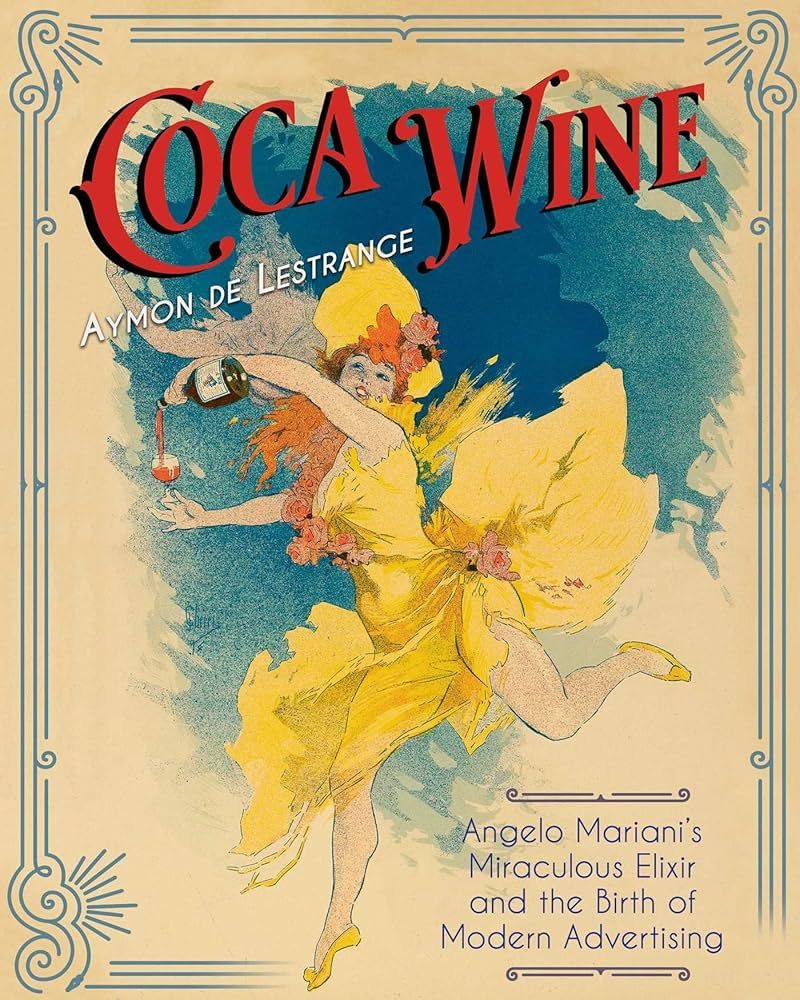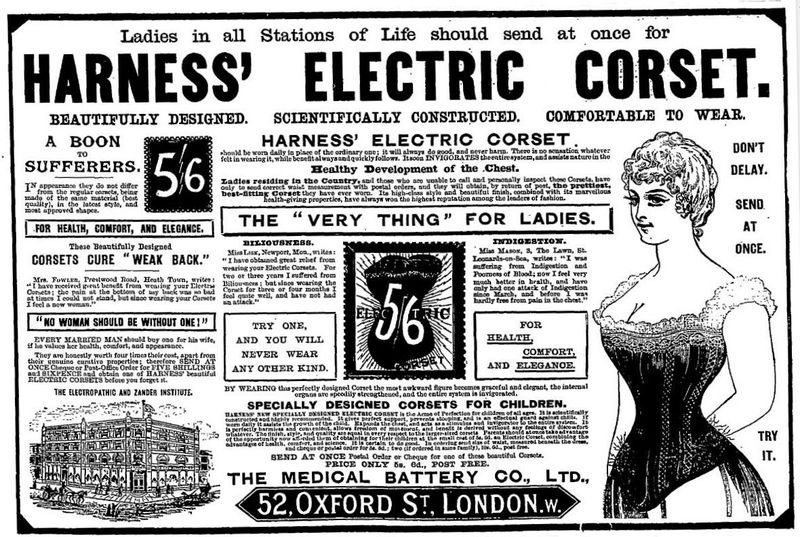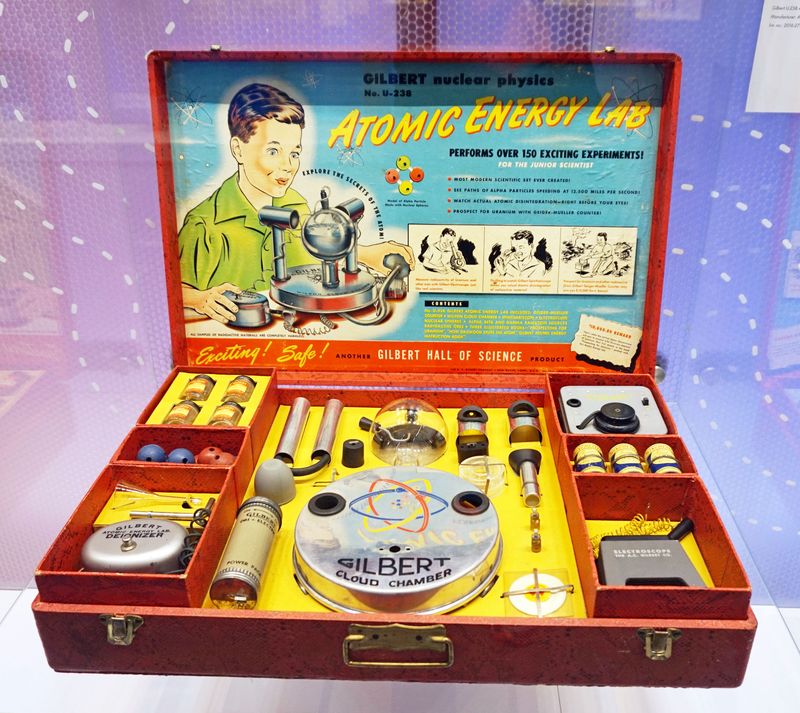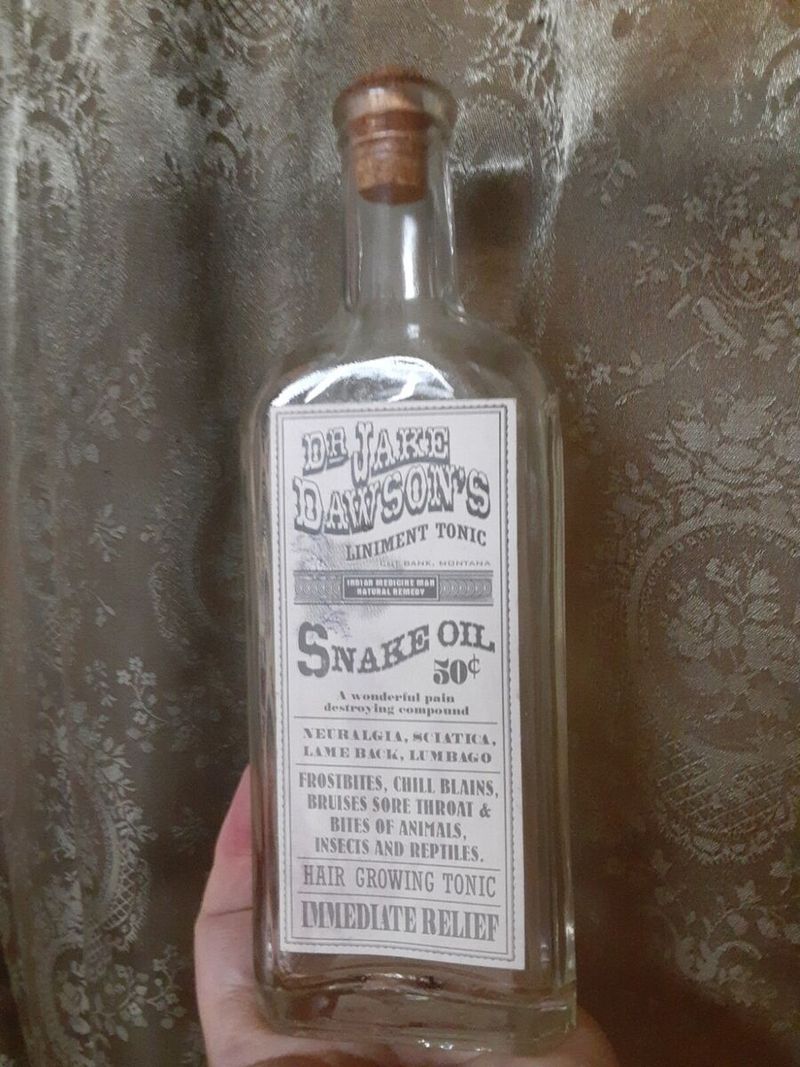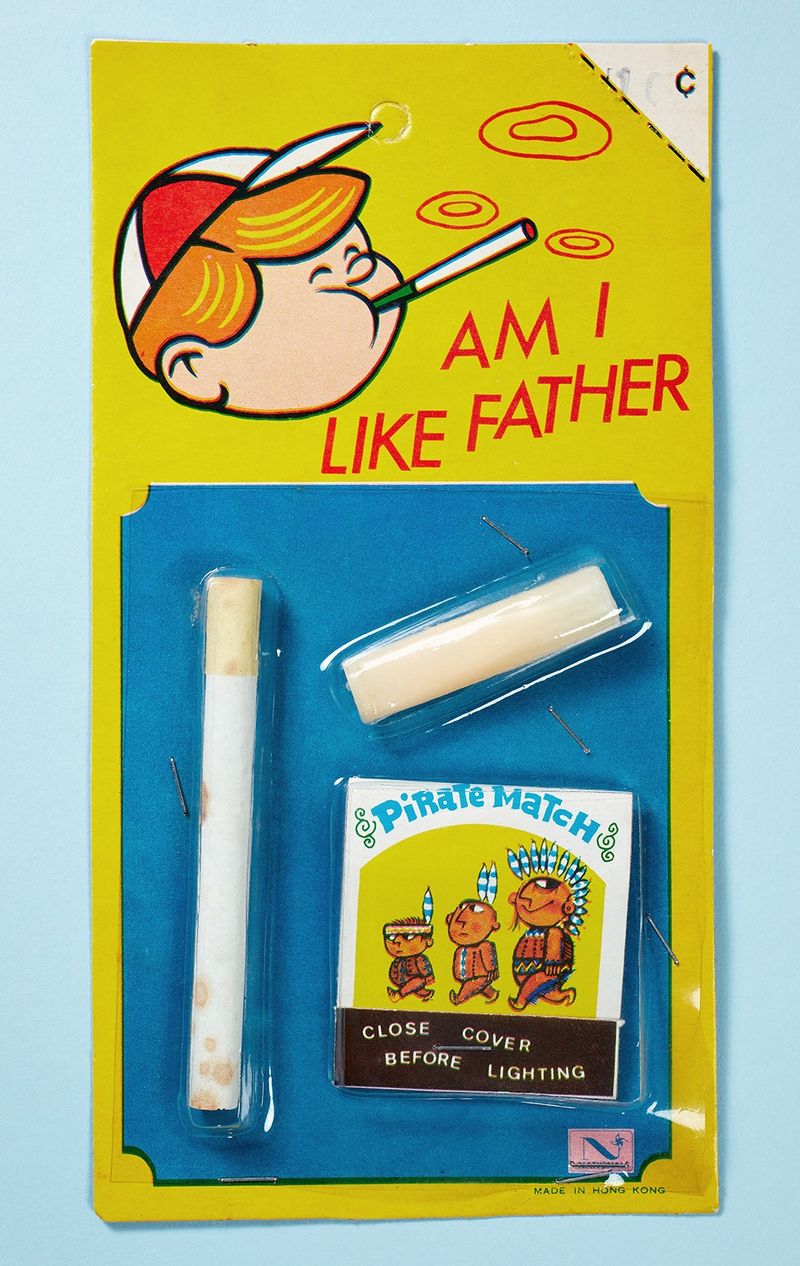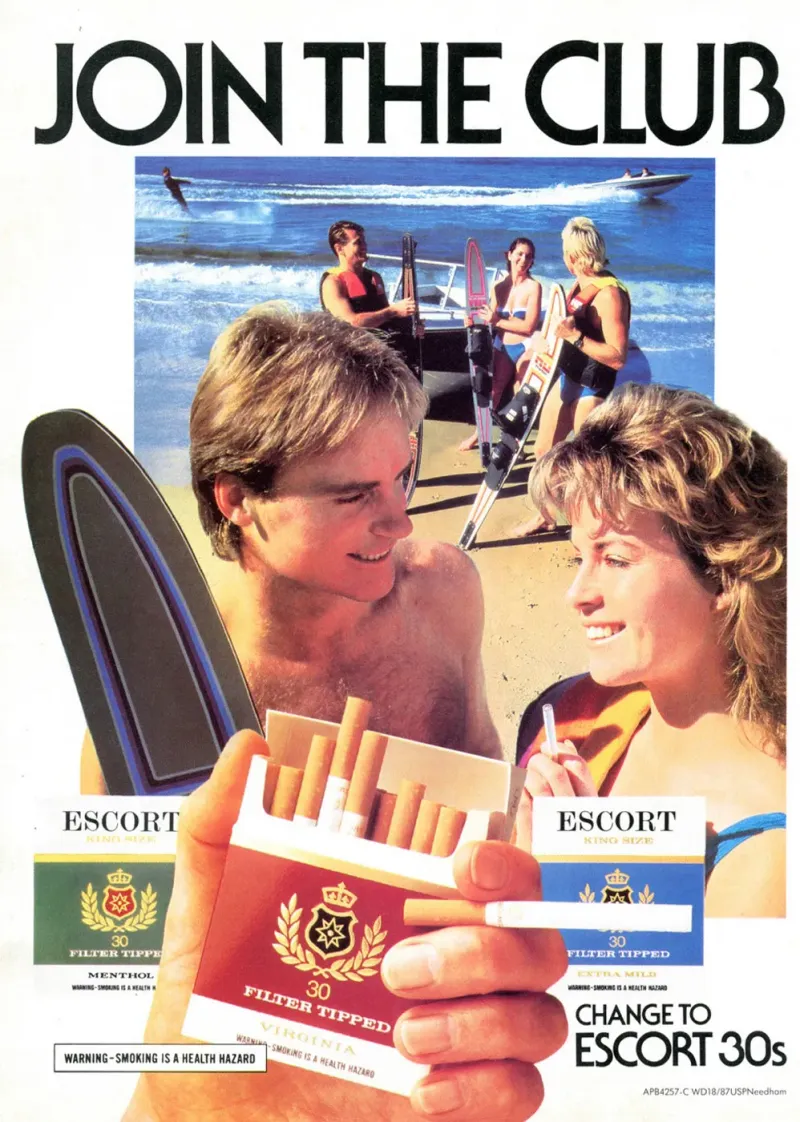The past often harbors products and practices that would shock the modern consumer. While nostalgia can be charming, some items from yesteryears carry baggage that would incite considerable backlash in today’s world.
This list explores twenty such products, shedding light on societal shifts and evolving values.
1. Radium Water Jugs
In the 1920s, radium was all the rage, touted for its supposed health benefits. Radium-infused water jugs promised revitalized energy and improved vitality. However, the radioactive element is now known to be extremely hazardous.
Today, such a product would undoubtedly lead to public outcry and legal battles. The idea of willingly consuming radioactive substances seems absurd and terrifying.
With our current understanding of radioactivity’s dangers, the promotion of radium-enriched products serves as a stark reminder of past ignorance and the need for rigorous scientific validation.
2. Lead-Based Paint
Lead-based paint was once a staple in homes across the globe, valued for its durability and vibrant colors. Unfortunately, lead is a toxic metal that poses severe health risks, especially to children.
Exposure can lead to developmental issues, learning disabilities, and other serious health concerns. Today, the use of lead paint in homes and toys is banned in many countries, and its presence is a serious environmental and health hazard.
The shift away from such dangerous materials highlights our growing commitment to safety and health.
3. Asbestos Insulation
Once hailed for its fireproofing properties and insulation capabilities, asbestos was a common building material. However, microscopic asbestos fibers can be inhaled, leading to serious lung diseases.
Mesothelioma, a rare form of cancer, has been directly linked to asbestos exposure. The public’s growing awareness of these dangers led to widespread bans and lawsuits.
In today’s world, promoting a product containing asbestos would be seen as reckless and irresponsible, reflecting a time when consumer safety was not prioritized as it is today.
4. Cigarette Candy
Marketed as a harmless treat for kids, candy cigarettes used to mimic adult smoking behaviors. These sugary sticks, often with a powdery puff, blurred the lines between playful mimicry and harmful habits.
Critics argue that such products normalized smoking and made it appealing to impressionable children. Today, with heightened awareness of smoking hazards, these candies have largely disappeared from store shelves.
Modern consumers find the idea of introducing children to smoking-related products appalling and irresponsible, showcasing a cultural shift towards health-consciousness.
5. Lawn Darts
Lawn darts, a once-popular backyard game, involved heavy darts with metal tips thrown at ground targets. The product’s design flaw was glaringly clear—sharp projectiles combined with casual outdoor play was a recipe for disaster.
Numerous injuries, including serious head traumas, led to widespread bans. Nowadays, safety standards ensure toys and games undergo rigorous testing before reaching consumers.
The lawn darts saga underscores the importance of considering potential risks in product design and prioritizing user safety above casual enjoyment.
6. DDT Pesticides
Dichloro-Diphenyl-Trichloroethane, or DDT, was once a heralded pesticide praised for its effectiveness in combatting insect-borne diseases. However, its long-term environmental impact and potential human health risks went unrecognized for years.
The chemical accumulates in ecosystems, harming wildlife, particularly birds. DDT’s legacy sparked environmental movements and led to its eventual ban.
Today, consumers are more aware of environmental sustainability and the long-term effects of chemical use, making DDT a product that would face immediate backlash if reintroduced.
7. Cocaine Tooth Drops
In the late 19th century, cocaine was marketed as a wonder drug, even for children’s toothaches. These tooth drops claimed to relieve pain quickly, but the addictive nature of cocaine soon became evident.
The potential for abuse and the subsequent health crises associated with cocaine use are now well-documented. In today’s society, such a product would be unthinkable and illegal.
This bizarre medical practice highlights the need for strict regulation and oversight in pharmaceutical products to protect consumers from dangerous substances.
8. Mercury Thermometers
Mercury thermometers were once standard in homes and medical facilities. While accurate, the risk of mercury exposure posed significant health hazards.
Mercury, a toxic heavy metal, can cause severe neurological and physiological damage. Today, digital thermometers have replaced these potentially dangerous tools, reflecting our shift towards safer alternatives.
The phase-out of mercury in everyday products underscores ongoing efforts to minimize toxic exposure and prioritize public well-being.
9. Arsenic Complexion Wafers
In the Victorian era, arsenic complexion wafers promised a paler and supposedly more attractive skin tone. However, arsenic is a potent poison with severe health ramifications.
Prolonged ingestion led to a multitude of health issues, including organ failure and death. Today’s emphasis on safe beauty products stands in stark contrast to such perilous practices.
Modern consumers demand transparency and safety in cosmetics, rejecting products with harmful ingredients and championing informed choices in beauty and self-care.
10. Tapeworm Diet Pills
Promoted as a miracle weight loss solution, tapeworm diet pills contained live tapeworms intended to eat away excess calories. The idea of ingesting parasites is both disturbing and dangerous.
Health risks included malnutrition, infections, and severe gastrointestinal issues. Today’s society prioritizes safe and healthy weight management practices, deeming such measures abhorrent.
The existence of such a product underscores the desperate lengths to which people have gone for beauty, and the need for responsible, health-focused dieting solutions.
11. Opium Syrup for Children
In the 19th century, opium syrups were a common remedy for soothing teething pain in infants and children. These syrups, containing potent narcotics, posed severe addiction risks and health issues.
The casual use of opium reflects a time when drug regulations were lax. Today, such a product would be met with outrage and legal action.
This alarming practice highlights the critical importance of stringent drug safety standards and the protection of vulnerable populations from harmful substances.
12. Cocaine-Infused Wine
Cocaine-infused wines, like the infamous Vin Mariani, were once popular for their stimulating effects. Marketed to enhance energy and mood, these wines failed to address the dangerous addiction potential.
The combination of alcohol and cocaine presents significant health risks, leading to cardiovascular issues and dependency. Today’s society recognizes these dangers, advocating for responsible consumption.
Products like these serve as a reminder of the evolving understanding of substance abuse and the need for conscientious marketing and regulation of consumables.
13. Electric Corsets
Electric corsets were a bizarre attempt to blend fashion with technology, promising slimming effects and muscle toning through electric currents.
These products often resulted in burns and electric shocks, showcasing a flawed understanding of safety. In today’s fashion and fitness industries, such a product would be condemned for its risks.
The tale of electric corsets serves as a cautionary story about the importance of merging innovation with safety in product design, emphasizing consumer well-being.
14. Atomic Toy Kits
During the 1950s, atomic toy kits allowed children to create small-scale nuclear reactions. The idea of educational play took a hazardous turn with real radioactive materials included.
Public awareness of radiation risks would now render such a toy unacceptable. This product exemplifies an era of unchecked scientific enthusiasm.
Today, educational toys are subject to stringent safety standards, ensuring that learning occurs in a secure environment, free from dangerous exposure.
15. Snake Oil Tonics
Snake oil tonics once claimed to cure everything from joint pain to chronic illnesses. Deceptive marketing and false promises led to widespread distrust in such remedies.
The term “snake oil” now symbolizes medical fraud. Modern consumers demand evidence-based treatments and transparency.
This historical relic of charlatanism highlights the necessity for regulations and consumer protection against false and potentially harmful claims in the health industry.
16. Racially Insensitive Toys
Toys that promoted racial stereotypes were once prevalent, reflecting societal prejudices of their time. These products perpetuated harmful narratives and reinforced discrimination.
Today, inclusivity and diversity are celebrated in children’s toys, encouraging acceptance and understanding. Society’s progress towards equality renders such toys unacceptable and offensive.
The evolution of toy design reflects broader cultural shifts towards empathy and inclusivity, setting a standard for respectful representation in all forms of media.
17. Cough Syrup with Heroin
Heroin, a derivative of morphine, was once advertised as a non-addictive cough suppressant. Its addictive nature became apparent, leading to devastating health impacts.
Today, the inclusion of such a potent narcotic in over-the-counter medicine is unimaginable, with stringent drug regulations in place.
This historical blunder underscores the critical need for rigorous testing and regulation to ensure consumer safety and prevent substance abuse.
18. Polyester Leisure Suits
Polyester leisure suits epitomized 1970s fashion but were notorious for being uncomfortable and flammable. The synthetic fabric, while trendy, posed fire hazards and environmental concerns.
Contemporary fashion critics highlight the importance of sustainability and consumer safety, moving away from such materials. Today’s consumers are more eco-conscious, favoring natural fibers.
The polyester leisure suit serves as a reminder of fashion blunders and the ongoing effort to balance style with environmental and personal well-being considerations.
19. Tobacco Marketing to Teens
In the mid-20th century, tobacco companies notoriously marketed cigarettes to teenagers, using youthful imagery and peer pressure tactics.
The strategy was to establish lifelong customers, despite the well-known health risks. Modern consumers find such practices predatory and unethical.
Today, anti-smoking campaigns and strict advertising laws protect young people from such manipulation, underscoring the shift towards public health and ethical marketing practices.
20. Sunlamp Tanning Devices
Sunlamp tanning devices promised a sun-kissed glow but posed significant health risks, including skin cancer and burns.
Emphasis on tanned beauty overshadowed the dangers of UV exposure. Modern awareness of skin cancer risks has led to safer alternatives like sunless tanning products.
This shift reflects a broader understanding of beauty that prioritizes health, encouraging safer beauty practices and informed consumer choices.
